We recently wrote on maps and “Map Compositions” as a form of Volunteered Geographic Information (VGI) — and how we wish to bring this concept forward during the INSPIRE Hack in Barcelona, towards the end of this month (September 2016, that is).
One of the ideas we have for illustrating the potential of Map Compositions is an application that does for maps what Google Docs does for text documents. In short, we envisage an online multi-party interactive white board for collaborative creation of maps.
Such a whiteboard is of great value in dialogue processes where several parties have to assess different aspects of the same decision for the the same location.
Wow! Looking back at that previous paragraph, I have to admit that that was rather abstract. Forgive me, perhaps we better move forward along the lines of an example:
There are thousands of good reasons why anyone would need to dig a hole in the street. At least, there are thousands of holes in the street at any given time.
Imagine a contractor applying for something as innocent as a permit to dig a hole on your street. Your neighbor might want a new Internet connection — or more immediately, a sewer line that transports its gloomy subject matter away from the house rather than into the house. Direction matters, especially when it comes to sewage.
Once this application is submitted it is often subject to scrutiny by a multitude of public and private agencies that owns stuff in the ground; or ‘utilities infrastructure’ as professionals like to call it — presumably because it sounds less plebeian than ‘stuff in the ground’.
An exaggerated display of interest in utilities infrastructure at social gathering has not been known as a catalyst of human conversations. However, utilities are of great significance to our daily comfort — and while we fail to appreciate them while they are present and operating, life becomes a nuisance once they are absent and/or dysfunctional. It is thus in our interest that the checks are done properly before a new hole is dug.
However, it is also in our interest that our contractor gets his permit as fast as possible so that our neighbor can stop scavenging on our WiFi, having us worried about what he might be searching for and what sort of letters we might receive from our ISP or the lawyers of some media company.
Today, permits are typically processed sequentially, involving a lot of transport overhead for what at the outset is a simple acceptance/conditional acceptance/rejection decision.
Imagine the parties involved in the assessment process, perhaps even the applicant herself, being able to share the same view of the data on a detailed base map and to be able to add external WMS/WFS layers on top of that map, or draw their own redlining or add annotation to the map during a Skype conference; all within the space of an hour.
By this simple means, we have gained no less than three benefits:
- We’ve enabled a faster processing of the permit application
- We’ve improved the inter-agency cooperation
- We have made savings by removing the need for physical meeting
Was that a better illustration of what we’re thinking of? We certainly hope so — but you’ll be the judge of that.
Functionally, the whiteboard would have to offer a full-screen interchangeable base map that could be from Google, OSM or any given WMS server.
All map collaborators would have the possibility to draw points, lines or polygons on the map — or to add textual annotation to it. All map collaborators (subject to the ‘map owners’ authorization) can edit redlining made by others and any changes will be saved into a log trail for provenance tracing.
All map collaborators may also add external data layers from WMS/WFS services and upload GeoJSON/KML files layers to be added to the map.
The resulting map may be saved as a “Map Composition” and shared as an object on social media or for embedding into a formal response letter — or any other conceivable display purpose.
Just an idea.
See you in Barcelona during the INSPIRE Hack.



